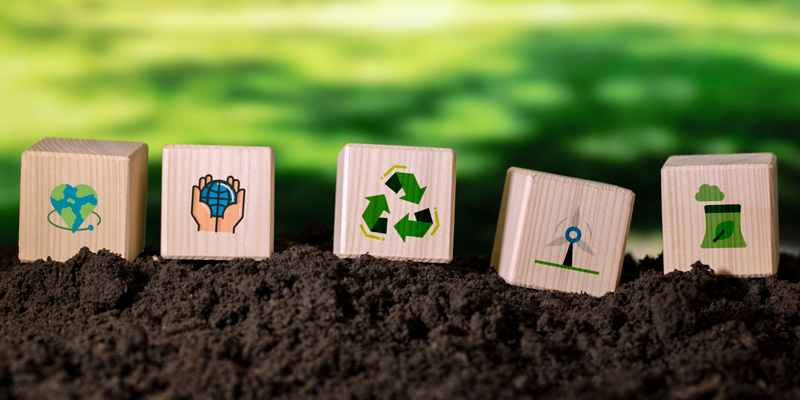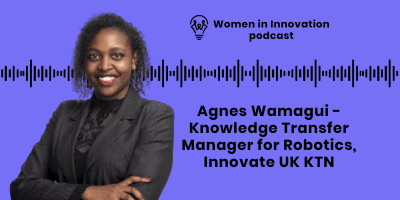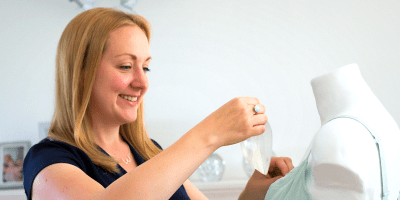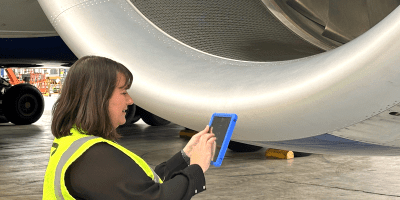Rachael Rothman is a professor of sustainable chemical engineering at the University of Sheffield who was born and brought up in Teesside and graduated from the University of Cambridge with a first-class MEng in Chemical Engineering. Rachael then spent a year in Sweden before embarking on her PhD at the University of Sheffield and following her PhD she became a postdoctoral research associate for two years, and then a lecturer in 2009, a senior lecturer in 2014 and a professor in 2022. Rachael holds several additional posts today including being director of the South Yorkshire Sustainability Centre, co-director of the Grantham Centre for Sustainable Futures, co-director of the UK hub for research challenges in hydrogen, and Academic Lead for Sustainability at the University of Sheffield.
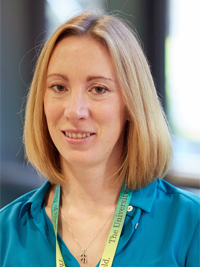
“Diversity of thought is crucial. If we think about the work we’re doing it’s not just about carbon dioxide or just about cost when you consider any system. It’s also about social angles that are vitally important when we think about moving to a more sustainable world.”
Improving sustainability in hydrogen, energy and plastics
I’m a chemical engineer and I studied chemical engineering at university in Cambridge, and after I finished my Master’s degree, I lived in Sweden for a year doing nothing to do with chemical engineering, instead teaching orienteering in an orienteering school, which I enjoyed, but it showed me that I wanted my brain to keep thinking about engineering, so I came back to the UK and did a PhD. That was when I moved to Sheffield.
My PhD examined ways to make hydrogen production more sustainable, and I’ve stayed in Sheffield ever since, working in several different roles. Now a professor of sustainable chemical engineering, so I do a lot of work around making things more sustainable in hydrogen, in energy and in plastics. As part of this, I direct our South Yorkshire Sustainability Centre, which is about connecting research, industry and local authorities together to try and translate that pathway so that we do research which is useful and can be implemented.
Redefining the system
My innovation remit is applying my skills and analysis to the areas I work in. I use what I’ve learned through chemical engineering to look at how can things be more sustainable. So, I work on some projects that are within the plastic space and we’re considering how can we reduce single-use plastics, and redefine the system. That could mean moving to compostable plastics or it could mean moving to reusable plastics, but what’s key is to look at the whole system, and see what makes most sense on an economic basis, on an environmental basis, and of course, as importantly as those, is to ensure people engage with the system that you design.
So, within the reuse work, we have a very interdisciplinary project where the psychologists and the social scientists are looking at how people respond to things. Will they use or reuse coffee cups say if they’re stained on the inside because they’ve been used with coffee? What’s the limit as to how many times people would use them?
Then I carry out the environmental assessment which says, for any particular cup, for example, it would need to be used a particular number of times, and is that number less than the number of times people would be prepared to use it at the most? So, you have to look across all those aspects of the system.
Similarly, within the hydrogen space, I’m looking at where should you use hydrogen, and when, and how, at what point would it make sense?
There’s different electrolysis technologies, for example, for making green hydrogen, but where would each one be applicable? If you’re an industry that wants to use hydrogen, which technology makes sense to you? And how do you couple energy, to make the system the most efficient?
There’s a big overlap there between the plastics and the energy spaces, which is when you start to think about bio-based plastics. Now, bio-based plastics have the potential to sequester CO2 because the plants, when they grow, take in carbon dioxide, but to turn that plant into a plastic or another chemical uses a lot of energy, so we’ve done a lot of analysis looking at what point in the future, and what technology you need in order for those bio-based materials to make sense on a carbon basis.
Translating research into action
My day-to-day work is quite varied. I often have a lot of meetings in a day, which could be with project partners or with local authorities, looking at how do we apply our research in the right place, and gathering the evidence that we need.
The South Yorkshire Sustainability Centre means we can do the research to generate the evidence, but once you’ve generated that evidence, you need to do something with it. The right people need to know about it, so parts of my day sometimes involve talking to the policy makers or the local authorities to ensure that that research can then be translated into practical steps to implementation.
As an academic, I also have a certain proportion of my time with teaching. So, I teach a core course on chemical engineering design to our second year, in which, because of my research background, students learn all about sustainability and how to make things in a sustainable way, as well as how to design processes.
I also work with PhD students and postdoctoral researchers and other academics looking at the sustainability analysis, and we’ve just trained a new cohort of Master’s and PhD students on how to do detailed life cycle assessments so that you can generate a really accurate environmental footprint from it.
Re-evaluating business as usual in the push for Net Zero
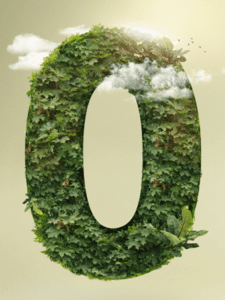
To give you an example, through the South Yorkshire Sustainability Centre, we’re working with a local brickworks. When you make bricks, you fire them in a kiln, and that kiln burns a lot of gas to generate the heat. And they’re thinking about, well, if they’re going to buy a new kiln soon, and when they buy one, it’s going to last the next 40-plus years.
What should they do? Because if they replace it like for like, then they’re stuck with a kiln that burns gas and makes carbon dioxide for the next 40 years. Could they electrify it, or could they burn hydrogen instead? But if they electrify it, they don’t have the same gas convection within the kiln, and so you have some questions about the quality of the bricks, and are they still the same?
If they move to a hydrogen kiln, then hydrogen burns at a higher temperature. So, are the refractory materials inside the kiln still OK with that high temperature? And again, would the quality of brick be the same if they fire them at slightly different temperatures?
These are some of the technical questions, but also if they choose to switch that hydrogen or electricity, what does that mean for the energy system? What is the electrical capability and is the substation nearby big enough? Where would they get their hydrogen from? How would they make it? Do they use an electrolyser on site? (Electolysers use electricity to split water into hydrogen and oxygen.)
These are the kinds of questions that we’re working on with lots of different industries. So, it’s looking at, if you move towards Net Zero, how do you do it and what does it mean for the local area and the whole system? And I think the big trend recently has been that people and companies are starting to think about that and they’re starting to question how do they do it and how they move forward more sustainably.
Transitioning into a more sustainable world must consider social aspects as well as technical innovation
Diversity of thought is crucial. If we think about the work we’re doing it’s not just about carbon dioxide or just about cost when you consider any system. It’s also about social angles that are vitally important when we think about moving to a more sustainable world.
So, we’re doing projects looking at reusable plastics, as I mentioned, and quite often with reusable systems, you find that you either have to pay a deposit on the reusable item, or you might need to give it a credit card number because if you don’t return it, you would get charged. But immediately, that requirement for a deposit or a credit card removes a certain proportion of the population from being able to engage with that system and that’s not what’s wanted. To achieve a just transition we need a wide range of perspectives from a wide range of people.
I think quite often, engineers and scientists can find great technical solutions, but when you try and deploy them, you find they don’t work for some reason, which may be more social reasons. This is why the interdisciplinary work we do is so important, because it brings you diversity of background, diversity of thought, and you have to think about the community you’re trying to work with to do this and make sure you bring all those different perspectives together to find an answer that will actually work going forward.
Ensuring women and other underrepresented groups receive the recognition they deserve
It’s key that everybody working in the space gets the recognition they deserve, and that means that if you have a diverse group of people on the project or a diverse group of people trying to achieve something, the whole diverse group receives the recognition for the part that they’ve played. So, as I just mentioned for the work we do in the plastics space, we collaborate with a hugely diverse range of people, and it includes people from different genders, different racial backgrounds, and different beliefs, so all of those angles are important, and whoever is involved needs to be recognised.
I do think that historically people may have been overlooked, and there are lots of different awards now that target specific groups, and in a way, that’s a good push for people to think about who was involved and how we recognise them.
Designing things for the future and improving lives
I think one especially important thing is involving more girls and women, as well as underrepresented groups more broadly, is having role models. So, even when I was a school pupil 25 years ago, I studied science and maths at A-Level. I loved maths, I loved science. My dad was a chemical engineer, my mum was a chemist.
I started off at university studying science in first year, which moved into chemical engineering but it had never occurred to me, as an A-Level student, to be an engineer, and nobody suggested it to me. Retrospectively, it’s like, well, obviously I should have been doing this, but I think at the time, the only chemical engineer I knew was my dad.
Had I asked about it, I’m sure he would have encouraged me, but it just hadn’t occurred to me, so I think showcasing role models and showcasing the range of work that people in engineering careers do is hugely important. There’s still a lot of misconceptions and many people think that an engineer is the person who comes to fix your boiler, for example.
A lot of engineering is about designing things for the future that make things better for people, and that help people. There’s engineers working in almost every aspect of life you can think of and when you start to talk to people who are at school now about what engineering actually is they say: “Oh, that’s what I want to do.”
I try to be involved in quite a bit of outreach because engineering is not something that I was exposed to. I think it would maybe have convinced me earlier that engineering was the right thing for me, providing role models helps get this across to people.
Harnessing the power of the UN Sustainable Development Goals
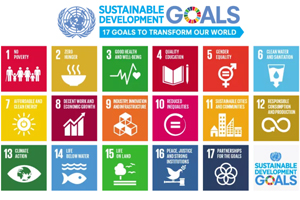
The wonderful thing too is that if you pick any of the 17 UN Sustainable Development Goals, there are almost unlimited subjects you could study either at GCSE or A-Level, or as an apprentice or at university and still work in that particular area.
So just take, number 11, Sustainable Cities and Communities, for example, and you think about the energy side of things, you could be an engineer, but you could also be somebody studying social science or a psychologist, because all of those subjects are relevant, so I think finding the skillsets that people naturally gravitate towards and showing how those skills can be used across that whole range of Sustainable Development Goals is the secret to engaging future generations in order to solve those problems.
Becoming a living lab
I have quite a few projects that have started over the last year that are picking up momentum. Our big Hydrogen Hub has been going for just over six months now. We have the first call out for new projects in it, and I’m excited to see what people put into that call and what range of research we can expand into in that space.
It’s the same with the South Yorkshire Sustainability Centre. We’re gaining momentum working in the local region by almost using ourselves as a living lab to demonstrate things. So, I’m looking forward to seeing how that develops over the coming year or so.
It’s almost non-stop in and out of work with two kids and a very busy job so I am also looking forward to having a couple of days off next week and a holiday later in the year.
Oh, and I’ve been growing my hair for the last four and a half years and so very soon I will be cutting it and donating it to the Little Princess Trust, a wonderful charity that provides wigs for kids with cancer to restore their confidence and identity, and I’ll also be raising some funds for that.
Header image by Freepik
Reference links
- https://www.linkedin.com/in/rachael-rothman-9397b415
- https://www.sheffield.ac.uk/cbe
- https://www.sheffield.ac.uk/south-yorks-sustainability-centre
- https://grantham.sheffield.ac.uk/
- https://twitter.com/CBESheffield
- https://www.instagram.com/sheffunieng
- https://www.facebook.com/sheffunieng
- https://www.linkedin.com/company/chemical-and-biological-engineering-sheffield/

